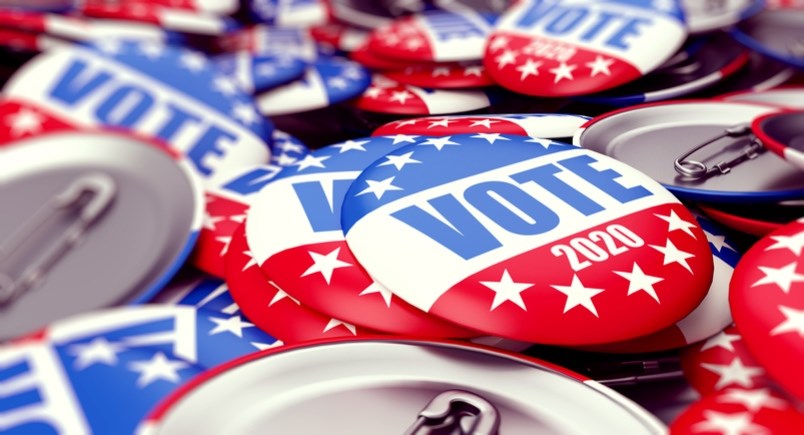Four months from now, the world will find out whether Donald Trump will be able to spend four more years inside the White House.
This year’s presidential campaign in the United States will be very different from the ones of elections past, with the COVID-19 pandemic affecting public gatherings, events and conventions.
Research Co. has been tracking this democratic process, and some themes are starting to emerge. The last presidential contest that saw an incumbent seek a new term took place in 2012, when Democrat Barack Obama ultimately defeated Republican Mitt Romney. I had the privilege of following that election from start to finish, and there are many differences between what we saw eight years ago and the mood of Americans in 2020.
In July 2012, there was no clear frontrunner in the race for the White House. Obama and Romney were supported by 47% of decided voters across the United States, with Independents barely breaking in favour of the incumbent president. Obama could count on the votes of most women and young voters, while Romney connected well with men and older voters.
This year, the situation is dissimilar. Trump, the Republican incumbent, sits 10 points behind prospective Democratic Party nominee Joe Biden at the national level. Across the country, in a survey that was completed before the Independence Day celebrations, 53% of decided voters said they would cast a ballot for Biden, while 43% would support Trump.
The gender gap is overwhelming, with Biden enjoying a 16-point lead among female decided voters (57% to 41%). The race is closer among male voters, with Biden at 49% and Trump at 47%.
Independents, who backed Trump over Hillary Clinton in 2016, are no longer happy with the president. In this crucial group, Biden is ahead of Trump by 15 points (54% to 39%). Unless the numbers tighten among American voters who do not align themselves with the Democrats or the Republicans, Trump’s chances will fade.
In our tracking, Trump’s approval rating dropped to 40% this month, down six points since we checked in early June, well into the COVID-19 pandemic but before the protests about racial equality dominated media coverage. An approval rating hovering around 50% is usually an indicator of a lost election for an incumbent president. Trump is significantly below this threshold right now.
Trump’s approval rating is particularly bad with African Americans (21%) and Latino and Hispanic Americans (32%). These two groups are usually supportive of Democrats, so the results are not earth-shattering. Still, his numbers also fell to 46% among White Americans.
When we asked Americans to select six words out of a list of 18 to describe Trump, almost three in five selected “arrogant” (57%). Of the six words chosen, the only one that is remotely positive is “strong” (36%). More than a third of Americans perceive their current head of state as “dishonest” (40%), “uncaring” (39%), “foolish” (also 39%) and “out of touch” (34%).
This does not mean that Americans are enthralled by Biden. When we pose the same question about the prospective Democratic Party nominee, about three in 10 Americans describe him as “intelligent” (32%), “compassionate” (also 32%), “down to earth” (30%), “honest” (28%), “weak” (28%) and “out of touch” (28%).
We could look at Biden’s results as superior to Trump’s, since only one of the six words is overly negative (“weak.”) These numbers are very different from what Barack Obama and Mitt Romney posted in July 2012.
At that time, 50% of Americans regarded Obama as “intelligent” and 46% felt the same way about Romney. In an exceedingly polarized nation, the numbers on this indicator are significantly lower for both Biden (32%) and Trump (31%).
Right now, Biden is clearly favoured at the national level, but we still need to look into the way specific American states will behave. The Democrats hope to win the three jurisdictions that took Trump to the White House (Michigan, Pennsylvania and Wisconsin) and perhaps make inroads in Florida and Ohio.
No election is decided four months in advance. In any case, three indicators point to Biden enjoying unique advantages in 2020: Trump’s weak approval rating, reminiscent of what Jimmy Carter and George H. W. Bush posted in 1976 and 1992, his difficulties in reconnecting with Independents, and a lower proportion of voters willing to cast a ballot for a third-party candidate.
In 2016, almost 6% of all cast ballots in the American presidential election went to third-party candidates, most notably Gary Johnson of the Libertarian Party and Jill Stein of the Green Party. This year, Americans are not looking at third parties as much as they were four years ago, with only 3% selecting Libertarian Jo Jorgensen or “some other candidate.” However, we collected our data before a man called Kanye Omari West flirted with becoming the Ross Perot of the 21st Century.
Results are based on an online study conducted on July 1 and July 2, 2020, among 1,200 American adults. The data has been statistically weighted according to U.S. census figures for age, gender and region. The margin of error, which measures sample variability, is plus or minus 2.8 percentage points, 19 times out of 20.



